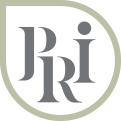Slow Down and Do More

Slow down and do more.
Photo by LOGAN WEAVER | @LGNWVR on Unsplash
Slow down and do more. You might think these two things don’t belong together. How do you work slower and do more? Would that work? I think so!
As a younger parent working full time, I felt like I had to be rushing around all the time. I was often trying to do more than one thing at a time. Of course, now we all know there is no such thing as multitasking. Rather, you are just switching from one task to another and ultimately not doing any of it very well or faster.
The first time I practiced mindfulness, I was trying to focus on one task with all my senses. I decided to focus on scrambling my eggs in the morning before work. I used all my senses and scrambled the eggs. Normally, I would try to check emails, make lunch, or something else on my to-do list while I made breakfast. This often leads to a burnt egg or two. When I focused on one task, I did it better and felt more relaxed and calm. This was a huge realization for me. Rushing around and being busy did NOT make me more productive. Slowing down and doing less and doing it slowly made me more productive!
Our Brains work better when we are not rushing
Cal Newport, author of Slow Productivity
In his new book, Slow Productivity The Lost Art of Accomplishment Without Burnout, Cal Newport, computer scientist and author, writes about slow productivity versus pseudo-productivity. In a conversation with Dan Harris on Ten Percent Happier, Newport discusses our overload culture and how it makes us less productive. He also says our current definition of productivity is broken and it encourages us to value busyness instead of useful effort and that leads to overload; too many tasks, meetings, and emails. Newport suggests three main ways to achieve slow productivity. I interpret this in my work life in this way.
Do Fewer Things
My understanding of this principle is to do one thing at a time with intention and mindfulness. I also learned to take on tasks after I complete tasks already on my plate. Of course, setting boundaries and creating structures are the key here as well as prioritizing. Leaders, you play a vital role here. Direct reports do not always have the power to set these boundaries easily. It’s better to have clear structures to track time and workload, rather than wait for overload to say no to a task. This is a proactive approach. You may need to gather data on what you do and how you spend your time.
Work at a natural pace.
Slow down and do more. Rather than speeding through a task or project, move at a pace that makes sense for what you are trying to achieve. I try to evaluate this before I start the task and set a realistic time frame for completion. There is no need to rush and make each task a 911. Think long-term and strategically. Again, gather data about your current work pace and tasks.
Obsess over quality.
When I work with intention and at a natural pace, the quality of my work increases. My eggs do not burn! In a work-related example, I would try to be on a phone call and answer emails simultaneously. I was rushing. I did not give either task my full attention or time. I did make small mistakes and ended up with poorer quality on both tasks. Slow down and do more.
This shift towards slowing down to do more can seem hard to reach. Maybe you have a demanding boss or work in a fast-paced field. Nonetheless, try to consider subtle shifts towards a change. Start with gathering some data on how you currently work. Where do you spend your time? What are your tasks? How long do they take? Establish intentions for change. Look for some small ways to shift toward doing fewer things, work at a natural pace, and think intentionally about increasing quality. Maybe start with scrambling eggs.

